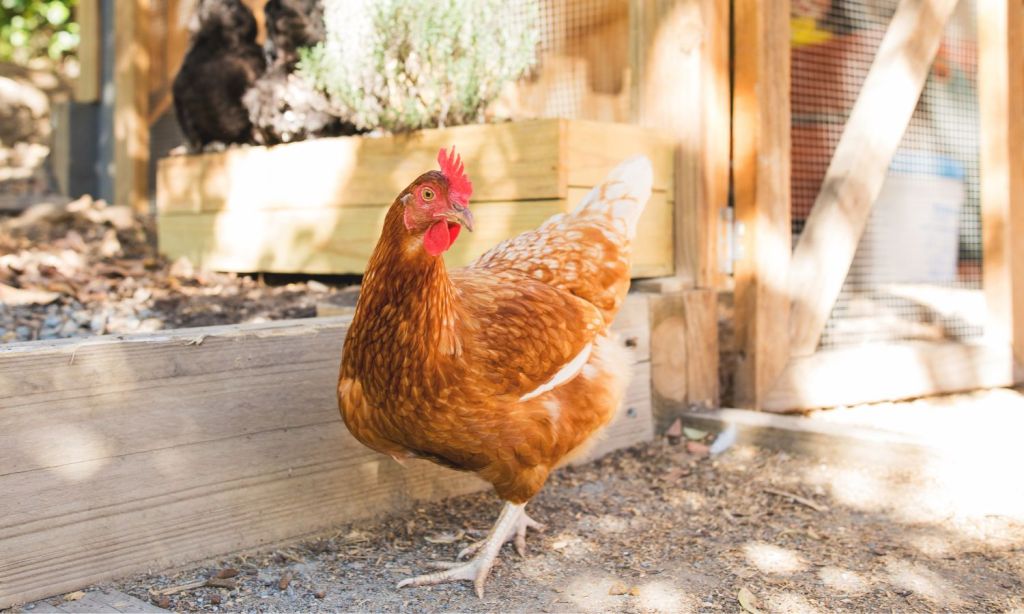The Latch has partnered with Suncorp Bank to deliver sustainability content that helps our readers drive positive action in their every day lives.
The next best thing to embracing the farm-to-table life is to bring a little bit of coop-to-table into your home instead, by building a chicken coop. Have you ever dreamt of wandering down into your back yard before breakfast and coming back with fresh eggs to create yummy meals for your family? In this story, we take you through the three steps you need to follow to get started with building a chicken coop at home.
It’s important to check whether your council allows you to build a coop, and if special permissions are needed ahead of time. For the sake of these steps, we’ll assume you’ve done that and are good to go.
First, you’ll need some backyard space, sun and, of course, space for a structure. It will also require time to set up and care for the chickens once you have them living at your home. As with any other hobby or pet, the more time and love you show to them will help them live longer and happier.
Choose a Location For the Chicken Coop
Chicken coops need to be built on high ground to prevent the chickens from getting wet and to avoid any build-up of water and moisture in the coop. If you cannot find high ground, you will need to build a structure to elevate your coop off the ground, to keep your birds dry.
Additionally, keeping the coop exposed to sunlight prevents moisture build-up and encourages hens to lay eggs, because they’ll be nice and cosy.
Pick Up Materials and Set Up the Chicken Coop
The size of your coop will depend on the breed and number of chickens you intend to home. Legally speaking, each bird should have about three square feet (roughly one square metre) to move around in, though the RSPCA recommends five to six square feet per bird (roughly two square metres), and the birds should have outdoor and indoor space to run around.
As for the materials, most people recommend unfinished plywood for flooring, which is an affordable and long-lasting option. However, wood may also get wet in the rain and play host to mites, so adding a layer of linoleum on top of the wood is a great idea for easy cleaning and a clean finish. You will also need to get hay, galvanised wires, nesting boxes, roosting bars, space for feeding, water points and vents for air circulation.
Related: Sustainability Habits That Are Actually More Convenient To Do Than Not
Related: 5 Common Household Scraps You Should Never Put In Your Compost Bin
There are two ways to approach the setup of your coop: either going down the DIY route and creating it from scratch (if you’re handy), or buying a pre-made coop that just needs assembly once it’s at home. Experts recommend one nesting box for every two chickens so that your chicks will know where to lay their eggs, and additionally, adding roosting bars so that chickens have a different area for sleeping than hatching. Keep this in mind when selecting a pre-made coop (or when constructing your own).
Caring for Your Chickens
Caring for your chickens, as you would for any of your pets, means making sure their food and exercise are taken care of, and that their coop and nesting boxes are kept clean and tidy. But one of the most important things to do is to make sure your chickens are safe from predators.
Chickens usually go into hiding or make very loud squawks when they are attacked by foxes or any other predatory animals, though it may be too late if the coop isn’t built properly. It’s a good idea to create a fully enclosed coop, including one with a roof, and a firm door that is latched shut and also ensure that the bottom of the coop is protected from any animals burrowing underneath.
When it comes to feeding your chickens, they love leftover pieces of raw fruits and vegetable cores, peels, skin and some cooked food such as rice, pasta, beans, or bread in small amounts.
Read more stories from The Latch and subscribe to our email newsletter.
Any representations, views or opinions contained in this article are those of The Latch and do not reflect those of and are not endorsed by Suncorp Bank.







